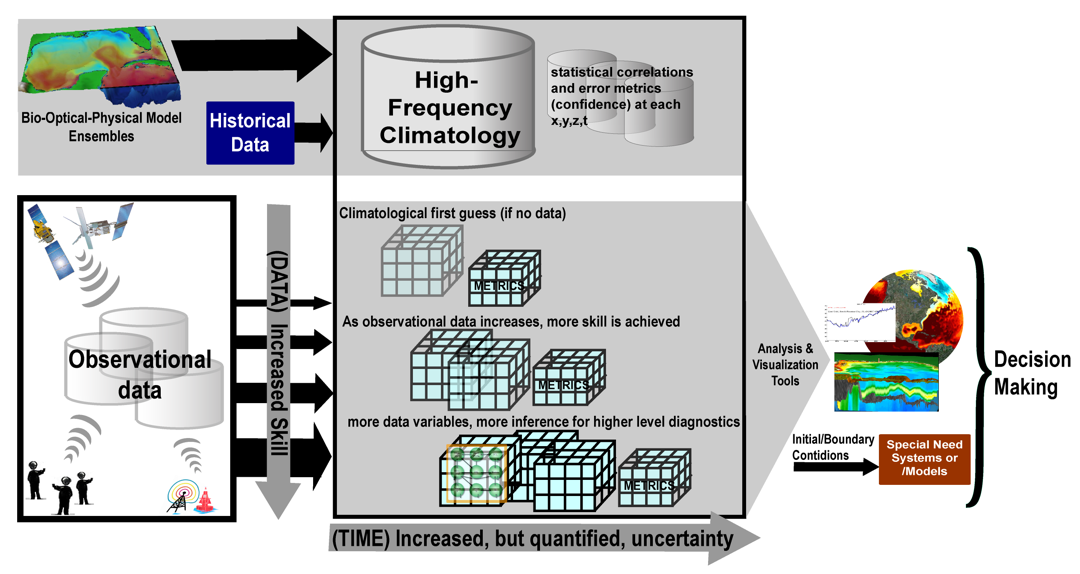United States Naval Research Laboratory
Bio-Optical/Physical Processes and Remote Sensing Section
Adaptive Ecosystem Climatology (AEC)

With a grant from NASA’s ROSES (Research Opportumities in Space and Earth Sciences) program (A.36 Earth Science Applications: Ecological Forecasting For Conservation And Natural Resource Management, NNH12ZDA001N-ECOF), we are developing an Adaptive Ecosystem Climatology (AEC). AEC will provide a flexible, on- line tool for ecoforecasting applications; it will meld observations collected by amateur observers (crowdsourcing), Earth Observation (EO) satellites, archived in-situ data, and output from a state-of-the-art, data assimilative, coupled bio-optical-physical ocean model system. The AEC mitigates the shortcomings of the components and combines their strengths to enhance decision- making activities of our end-user, partner organizations (NOAA, BOEM, EPA).
Analyses of decadal time-series of EO, in-situ, and numerical model simulations provide temporal and spatial relationships (covariances, multivariate correlations) of primary ecosystem components. Using these relationships, we will build a three-dimensional, dynamically balanced, gridded, static climatology for each calendar day of temperature, salinity, sea surface height, currents, nitrate, ammonium, silicate, phosphate, oxygen, zoo- and phyto- plankton, chlorophyll, detritus, and submarine light. Using the static climatology as a background ‘first guess’, observations (EO, in-situ, or crowdsourced) from a particular date can be ingested to ‘nudge’ the climatology toward current conditions, to provide updated, representative fields for that date (adaptive climatology). The resultant AEC fields can then be interpolated, sub-sampled, and averaged to provide inputs, initial and/or boundary conditions for many types of management models. An on-line tool (hosted by NOAA) will facilitate rapid and efficient creation of the desired fields from AEC, and will provide tools for analysis and data visualization, along with estimates of uncertainty levels and model sensitivity. These targeted products will be designed in conjunction with partner organizations.